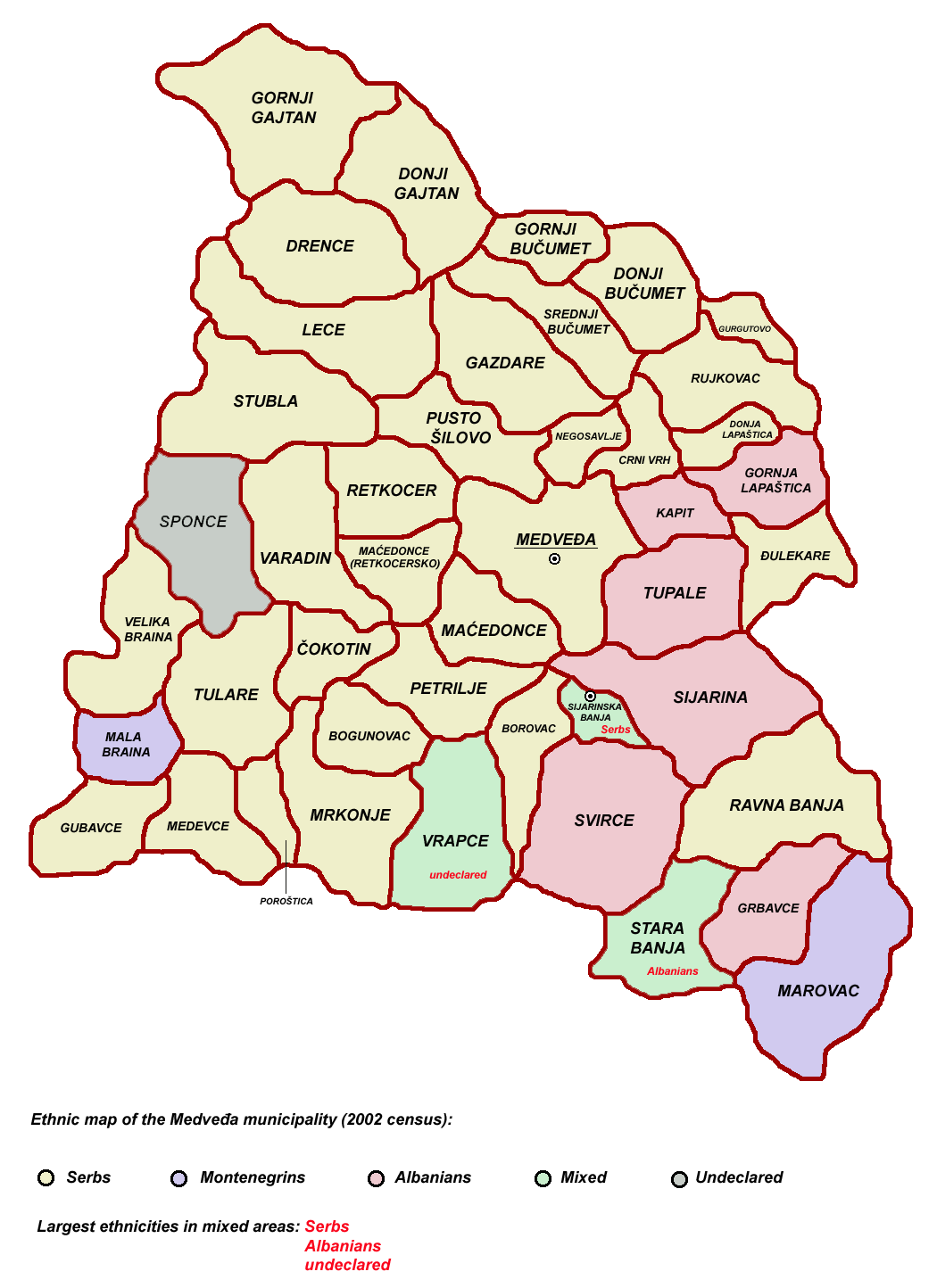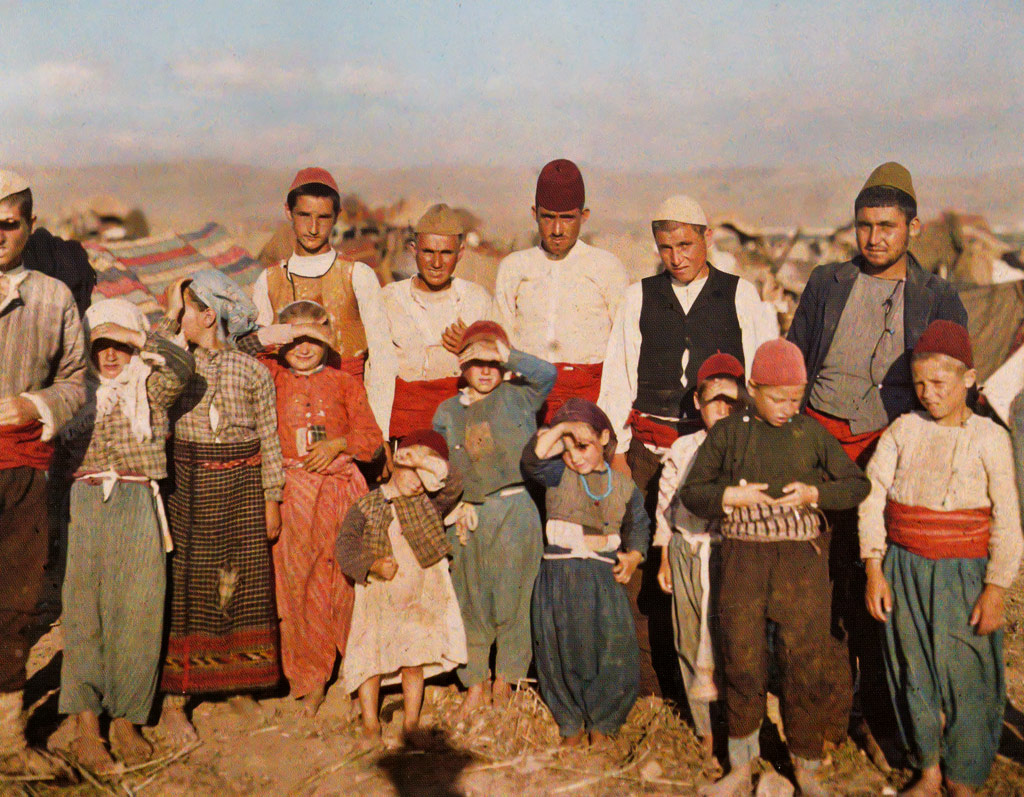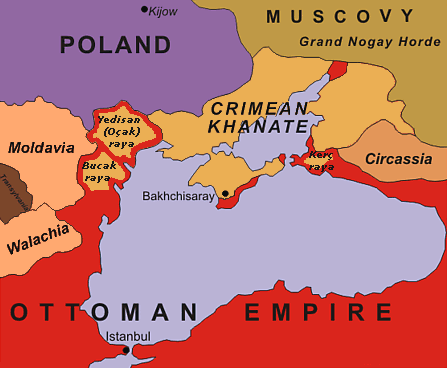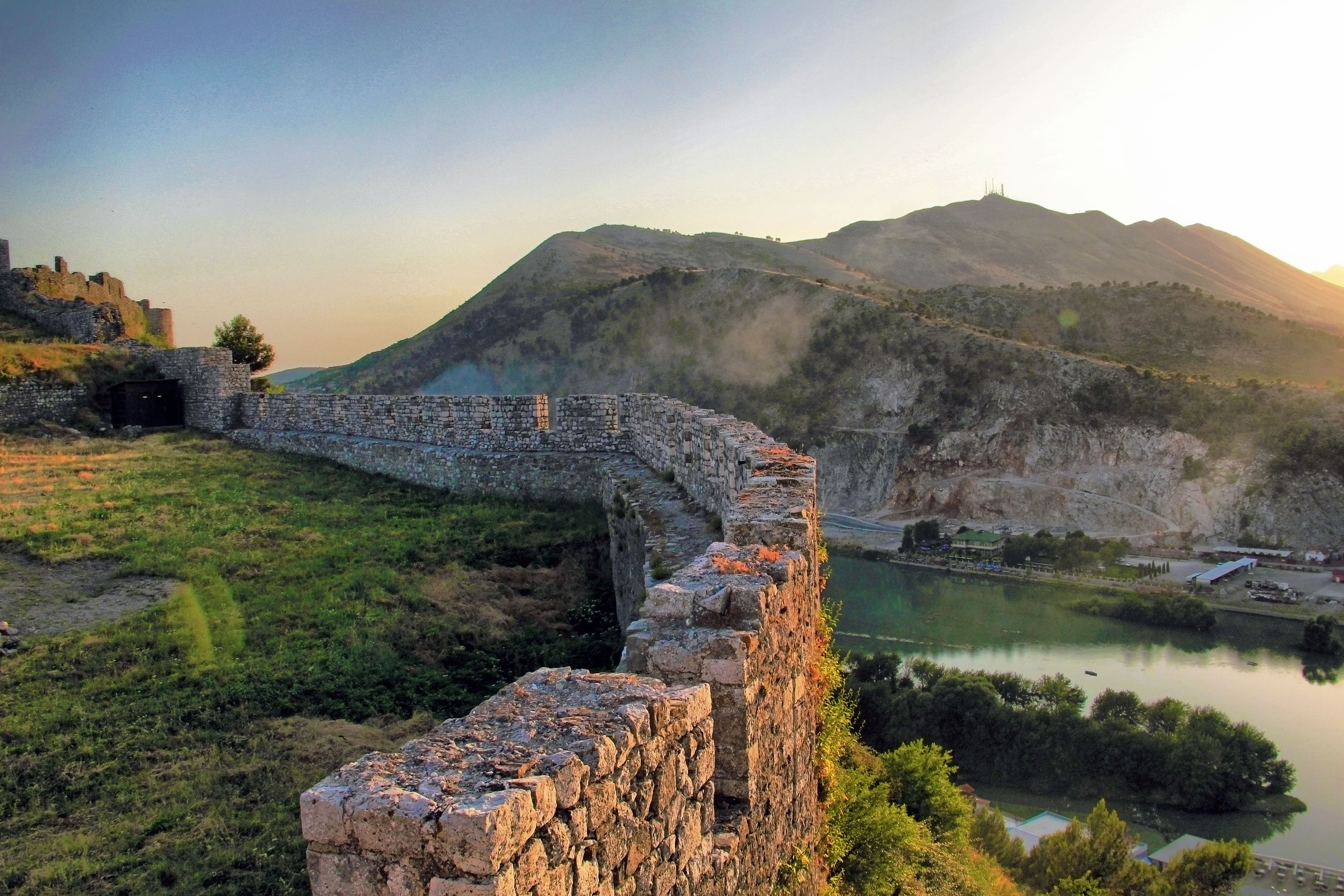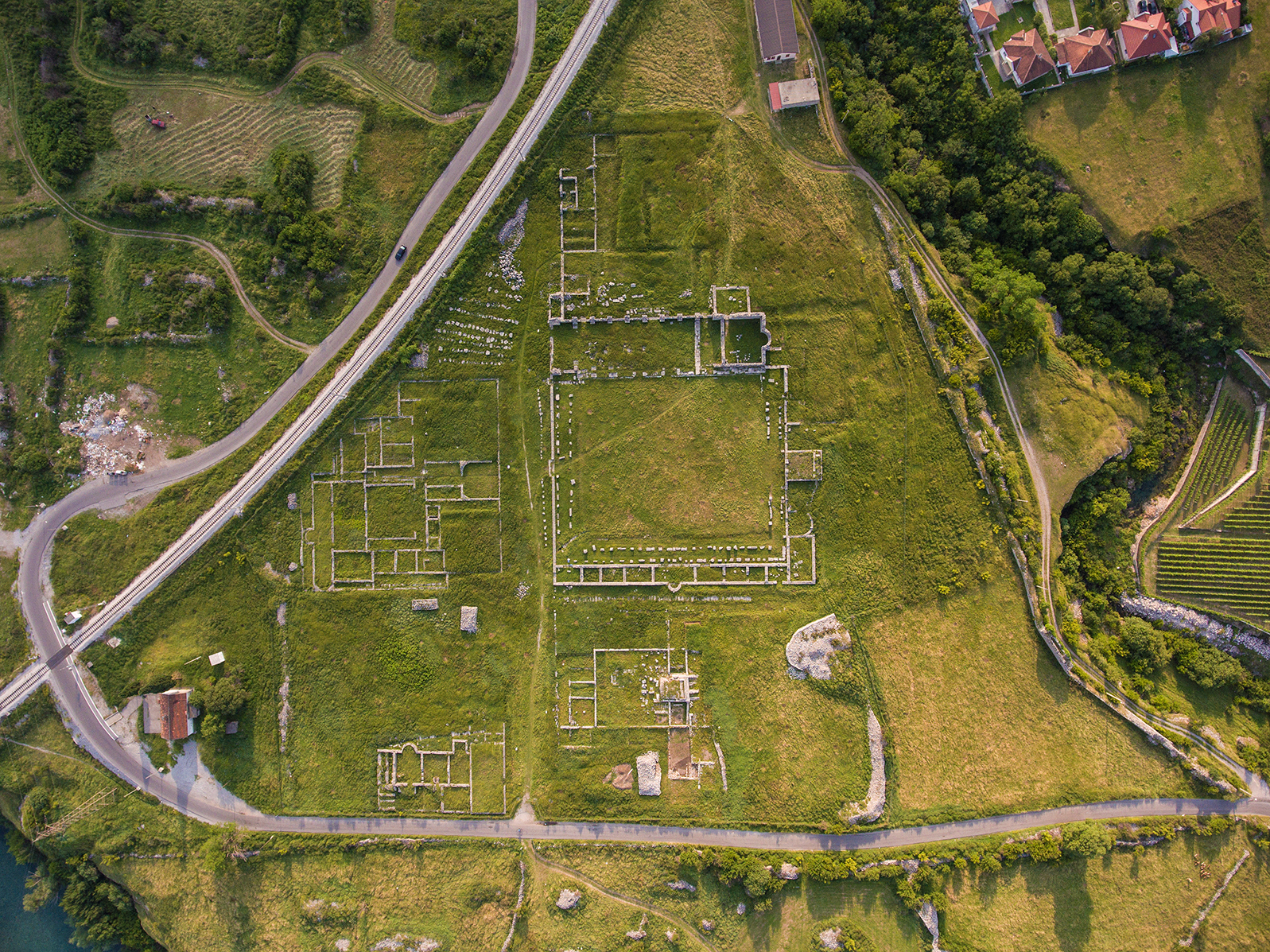|
Expulsion Of The Albanians (1877–1878)
The expulsion of the Albanians (1877–1878) refers to events of forced migration of Albanian populations from areas that became incorporated into the Principality of Serbia and Principality of Montenegro in 1878 after their initial expulsion from 1830–1876. These wars, alongside the larger Russo-Ottoman War (1877–78) ended in defeat and substantial territorial losses for the Ottoman Empire which was formalised at the Congress of Berlin. This expulsion was part of the wider persecution of Muslims in the Balkans during the geopolitical and territorial decline of the Ottoman Empire. On the eve of conflict between Montenegro and the Ottomans (1876–1878), a substantial Albanian population resided in the Sanjak of İşkodra. In the Montenegrin-Ottoman war that ensued, strong resistance in the towns of Podgorica and Spuž toward Montenegrin forces was followed by the expulsion of their Albanian and Slavic Muslim populations who resettled in Shkodër. On the eve of conflict ... [...More Info...] [...Related Items...] OR: [Wikipedia] [Google] [Baidu] |
Persecution Of Muslims During The Ottoman Contraction
During the decline and dissolution of the Ottoman Empire, Muslim inhabitants (including Turks, Kurds, Albanians, Bosnian Muslims, Circassians, Serb Muslims, Greek Muslims, Muslim Roma, Pomaks) living in territories previously under Ottoman control often found themselves persecuted after borders were re-drawn. These populations were subject to genocide, expropriation, massacres, religious persecution, mass rape, and ethnic cleansing.McCarthy, Justin Death and Exile: The Ethnic Cleansing of Ottoman Muslims, 1821–1922', Darwin Press Incorporated, 1996, , Chapter one, The land to be lost, p. 1Adam Jones. (2010).Genocide: A Comprehensive Introduction' page 65 & 152. "Incorporating a global-comparative perspective on the genocide of the last half-millenium has enabled important advances in the understanding of events central to the genocide studies field – such as the process of Ottoman imperial dissolution, reciprocal genocidal killing (during the "Unweaving" in the Balkans). ... [...More Info...] [...Related Items...] OR: [Wikipedia] [Google] [Baidu] |
Russo-Turkish War (1877–78)
The Russo-Turkish wars ( ), or the Russo-Ottoman wars (), began in 1568 and continued intermittently until 1918. They consisted of twelve conflicts in total, making them one of the longest series of wars in the history of Europe. All but four of these wars ended in losses for the Ottoman Empire, which was undergoing a period of stagnation and decline. Conversely, they showcased the ascendancy of the Russian Empire as a significant European power after Peter the Great oversaw extensive modernization efforts in the early 18th century. Ultimately, however, the end of the Russo-Turkish wars came about with the dissolution of the two belligerents' respective states as a consequence of World War I: the Russian Empire collapsed in 1917 and was ultimately succeeded by the Union of Soviet Socialist Republics in 1922; while the Ottoman Empire was partitioned between 1918 and 1922 and succeeded by the Republic of Turkey in 1923. History Initial and intermediate phases (1568–1739) ... [...More Info...] [...Related Items...] OR: [Wikipedia] [Google] [Baidu] |
Muhaxhir (Albanians)
Muhaxhir and Muhaxher (plural: Muhaxhirë and Muhaxherë, meaning "Muslim refugees" in Albanian) are Ottoman Albanian communities that left their homes as refugees or were transferred, from Greece, Serbia and Montenegro to Albania, Kosovo and to a lesser extent North Macedonia during and following various wars. The term is used for Muslims (including Turks, Bosniaks, Circassians and Romani) and Muslim Albanians whom were expelled by the Serb army from most parts of the Sanjak of Niş and fled to the Kosovo Vilayet during and after the Serbian–Ottoman War (1876–78), that is by 1881. An estimated 49–130,000, or anywhere between 30 and 70% of local Albanians and Muslims were killed or expelled by the Serbian army. Today, only a fraction of Albanians remain is Southern Serbia, most of them in Preševo valley. With the establishment of the Republic of Albania in 1912, a large influx of Albanians, as well as other Muslims, from Kosovo, Montenegro, North Macedonia, Greece, Egy ... [...More Info...] [...Related Items...] OR: [Wikipedia] [Google] [Baidu] |
Ethnic Cleansing
Ethnic cleansing is the systematic forced removal of ethnic, racial, or religious groups from a given area, with the intent of making the society ethnically homogeneous. Along with direct removal such as deportation or population transfer, it also includes indirect methods aimed at forced migration by coercing the victim group to flee and preventing its return, such as murder, rape, and property destruction. Both the definition and charge of ethnic cleansing is often disputed, with some researchers including and others excluding cultural genocide, coercive assimilation or mass killings as a means of depopulating an area of a particular group, or calling it a euphemism for genocide or cultural genocide. In 21st century Europe, the term ''remigration'' has been used for similar policies. Although scholars do not agree on which events constitute ethnic cleansing, list of ethnic cleansing campaigns, many instances have occurred throughout history. The term was first used to descri ... [...More Info...] [...Related Items...] OR: [Wikipedia] [Google] [Baidu] |
Llap (region)
The Llap Region (; ) is a region located in the north-eastern part of Kosovo. Llap in the broadest sense includes the watershed of the Llapi River. The Llapi water collection begins in the mountains of Kopaonik in the north and west and its source is considered to be the village of Pollatë, and ends by joining the Sitnica river in Lumadh, municipality of Vushtrri, in the north-west of Pristina. The topographic watershed of the Llapi River covers an area of . This area approximately corresponds to the administrative territory of the municipality of Podujevë in the current division of Kosovo. Podujevë as a city in the Llap region is the most important economic, political, administrative, educational, cultural and health center. About 120 villages gravitate to this region, although some of them administratively belong to the municipalities of Pristina, Vushtrri or Mitrovica. The municipality of Podujevë includes 78 villages. Etymology The territory of Llap is named after t ... [...More Info...] [...Related Items...] OR: [Wikipedia] [Google] [Baidu] |
Jablanica (river)
The Jablanica ( sr-Cyrl, Јабланица, ) is an river in southern Serbia. A left tributary of the South (or Južna) Morava river, it gives its name to the region of Jablanica and to modern Serbia's Jablanica District, with the region contributing about one third of the district's area. Origin The Jablanica originates from the Goljak mountain, near the village of Grbavce, Medveđa. The area is rich in thermal springs, so several spas are located near the river: Stara Banja, Ravna Banja and Sijarina with popular Sijarinska Banja. At the village of Maćedonce Retkocersko, the Jablanica receives the left tributary ''Čokotinska reka'' (Cyrillic: ''Чокотинска река''), turns southeast and the region of Jablanica begins from that point. Jablanica region The upper Jablanica region is made of narrow river valley on the southern slopes of the Majdan and Radan mountains, in the westernmost corner of Jablanica District and near the border of the District of Prišt ... [...More Info...] [...Related Items...] OR: [Wikipedia] [Google] [Baidu] |
Ottoman Kosovo
Kosovo was part of the Ottoman Empire from 1455 to 1913, originally as part of the eyalet of Rumelia, and from 1864 as a separate Kosovo vilayet. During this period several administrative districts (known as ''sanjaks'' ("banners" or districts) each ruled by a ''sanjakbey'' (roughly equivalent to "district lord") have included parts of the territory as parts of their territories. History After the battle of Kosovo in 1389, the rule of the Serbian Empire faded dramatically in the region. Seventy years passed after the Battle of Kosovo before the entire region fell under full Ottoman control. Their hold on Kosovo was gradually established: a Turkish garrison was deployed in Zvečan in 1399 to protect the north, and in 1423, an Ottoman court was set up in Pristina while customs officials managed the road linking Pristina and Novi Pazar. The conquest was only considered complete in 1455 when the mining town of Novo Brdo surrendered to Sultan Mehmet after a 40-day siege. 17th ce ... [...More Info...] [...Related Items...] OR: [Wikipedia] [Google] [Baidu] |
Sanjak Of Niş
A sanjak or sancak (, , "flag, banner") was an administrative division of the Ottoman Empire. The Ottomans also sometimes called the sanjak a liva (, ) from the name's calque in Arabic and Persian. Banners were a common organization of nomadic groups on the Eurasian Steppe including the early Turks, Mongols, and Manchus and were used as the name for the initial first-level territorial divisions at the formation of the Ottoman Empire. Upon the empire's expansion and the establishment of eyalets as larger provinces, sanjaks were used as the second-level administrative divisions. They continued in this purpose after the eyalets were replaced by vilayets during the Tanzimat reforms of the 19th century. Sanjaks were typically headed by a bey or sanjakbey. The Tanzimat reforms initially placed some sanjaks under kaymakams and others under mutasarrifs; a sanjak under a mutasarrif was known as a mutasarriflik. The districts of each sanjak were known as kazas. These were initially overs ... [...More Info...] [...Related Items...] OR: [Wikipedia] [Google] [Baidu] |
Shkodër
Shkodër ( , ; sq-definite, Shkodra; historically known as Scodra or Scutari) is the List of cities and towns in Albania, fifth-most-populous city of Albania and the seat of Shkodër County and Shkodër Municipality. Shkodër has been List of oldest continuously inhabited cities, continuously inhabited since the Early Bronze Age ( 2250–2000 BC), and has roughly 2,200 years of recorded history. The city sprawls across the Plain of Mbishkodra between the southern part of Lake Skadar, Lake Shkodër and the foothills of the Albanian Alps on the banks of the Buna (Adriatic Sea), Buna, Drin (river), Drin and Kir (river), Kir rivers. Due to its proximity to the Adriatic Sea, Shkodër is affected by a seasonal Mediterranean climate with Continental climate, continental influences. An urban settlement called ''Skodra'' was founded by the Illyrians, Illyrian tribe of Labeatae in the 4th century BCE. It became the capital of the Illyrian kingdom under the Ardiaei and Labeatae and was one ... [...More Info...] [...Related Items...] OR: [Wikipedia] [Google] [Baidu] |
Spuž
Spuž () is a small town seated near Zeta river, within the Municipalities of Montenegro, municipality of Danilovgrad Municipality, Danilovgrad in the central Montenegrin region. Overview It is located halfway between Podgorica and Danilovgrad, in the Bjelopavlići plain, Bjelopavlići valley. It was part of the Ottoman Empire between 1474 and 1878 and was kaza centre in Sanjak of Scutari before joining to Kingdom of Montenegro as "İşpozi". It is known as the location of the ZIKS, Spuž prison complex (''Zavod za izdržavanje kaznenih sankcija'' - ''ZIKS''), the largest facility of that kind in Montenegro. History In the 16th century, the population was composed of Serbs, Turks and Albanians. Albanians were noted to have their own mahalas (neighborhoods) within Spuž and Onogošt (Nikšić). Demographics According to the 2011 census, its population was 1,696. Sports The local football team is OFK Spuž, who play in the country's Montenegrin Third League, third tier. Form ... [...More Info...] [...Related Items...] OR: [Wikipedia] [Google] [Baidu] |
Podgorica
Podgorica ( cnr-Cyrl, Подгорица; ) is the Capital city, capital and List of cities and towns in Montenegro, largest city of Montenegro. The city is just north of Lake Skadar and close to coastal destinations on the Adriatic Sea. Historically, it was Podgorica's position at the confluence of the Ribnica (Morača), Ribnica and Morača River, Morača rivers and at the meeting-point of the fertile Zeta Plain and Bjelopavlići Valley that encouraged settlement. The surrounding landscape is predominantly mountainous terrain. After World War II, Podgorica was first designated as the capital of Montenegro in 1946. At that time, it was renamed Titograd in honor of Josip Broz Tito, the leader of Yugoslavia. It served as the capital of the Socialist Republic of Montenegro within the Socialist Federal Republic of Yugoslavia until Montenegro's declaration of independence in 2006, after which it was reaffirmed as the capital of an independent Montenegro. The city's original name, Pod ... [...More Info...] [...Related Items...] OR: [Wikipedia] [Google] [Baidu] |
Sanjak Of İşkodra
The Sanjak of Scutari or Sanjak of Shkodra (; ; or ''İşkodra Sancağı'') was one of the sanjaks of the Ottoman Empire. It was established after the Ottoman Empire acquired Shkodra after the siege of Shkodra in 1478–9. It was part of the Eyalet of Rumelia until 1867, when it became a part, together with the Sanjak of Skopje, of the newly established Scutari Vilayet. In 1912 and the beginning of 1913 it was occupied by members of the Balkan League during the First Balkan War. In 1914 the territory of Sanjak of Scutari became a part of the Principality of Albania, established on the basis of the peace contract signed during the London Conference in 1913. History Background and formation With short interruptions, the territory of northern Albania, including what would become the Sanjak of Scutari, remained under the rule of the Serbian feudal lords of the state of Duklja and Raška for centuries. After the fall of the Serbian Empire in the mid-14th century, local nobi ... [...More Info...] [...Related Items...] OR: [Wikipedia] [Google] [Baidu] |
